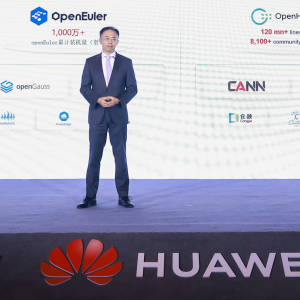Rich Waldron did everything to keep Tray.ai alive. Founding the firm in 2012, Waldron went without a salary and funded the no- and low-code specialist by selling shoes online, running an ad agency and printing a small magazine. It worked. Having piqued the interest of investors, Waldron upped sticks from London to San Francisco with only a few days’ notice and used its own automation software to seek out more venture capital firms. Tray.ai subsequently pivoted from an email-centric foundation to a broader integration fabric but maintained one tenet of faith: the need to simplify building software by connecting data and actions across systems.
Still headquartered in San Francisco, Tray.ai now helps customers create AI agents for common tasks across popular applications like Salesforce, Slack and Jira, such as running IT service management, CRM campaigns and HR service desks. Tech Monitor spoke to its CEO face-to-face in London in the summer and followed up recently by email. In the following interview, edited for length and clarity, Waldron discusses AI hype, the CIO’s role in navigating it, and balancing the urge to innovate with the need to repay your investors.

We see the term ‘agentic AI’ used in a very fast and loose fashion. What does it mean to you?
Rich Waldron: We define an AI agent as a software entity that can reason over knowledge, make decisions, and act independently within defined guardrails. Autonomy, in this context, means that the agent doesn’t need to follow a rigid, predefined workflow. It can pursue an objective dynamically and based on what it knows, the tools it has access to, and the real-time context. That’s fundamentally different from static automation or prompt-based interfaces.
Is it a frustration for those of you at the heart of agent automation and agentic AI to see the term being misapplied?
We’re seeing everything from chatbots to simple automations being rebranded as agents. The term has heat, and that’s attracting marketing spin. But the danger is confusion. A script that performs a task when prompted isn’t an agent. Neither is a chatbot that can’t take meaningful action across systems. We need clearer standards.
What do you see as being the implications for IT leaders over this confusion and jostling for position in agentic AI? Should CIOs care?
CIOs absolutely need to care. If they can’t distinguish between a Copilot that just surfaces suggestions and an agent that can independently reason and act, [then] they risk deploying brittle solutions that don’t scale or deliver real value. Worse, they might build agent silos tied to individual SaaS vendors and end up playing referee between them. The key is governance and orchestration. A true enterprise-grade agent strategy needs to be built with control, adaptability and data context at its core.
Playing devil’s advocate, hasn’t a big part of the CIO/CTO role always been looped in with that role of playing vendor referee?
It has been, but it shouldn’t need to be! Vendor management and software integration are hard enough without these extra games being played. For agentic AI to succeed in our space, what we all need to focus on is getting services to work fast and without friction, lock-in or dependencies.
There’s increased cynicism about AI as a bubble – do you concur with that view?
I wouldn’t call it a bubble. It’s the messy middle of a new S-curve: lots of experiments, uneven results, and a fast learning cycle. As the noise settles, a few things usually happen in sequence—standards harden, point tools consolidate, and budgets shift from pilots to programs. When that phase arrives, advantage goes to teams that are embedded in real workflows, have clean data rights, integrate with systems of record, and handle identity and permissions natively. Distribution and governance matter more than model novelty.
We welcome the shakeout. Clearer standards (MCP today, others emerging), cleaner procurement, and tougher ROI scrutiny make it easier for enterprises to choose durable layers and for vendors to focus on long-term value, not demos.
There’s clearly a lot of pressure on any tech leader to balance innovation against repaying investors and appeasing key stakeholders. How do you deal with that?
I try not to overthink the “pressure”. The job is to deliver value to customers; everything else is a lagging indicator. If we’re shipping things customers use, adoption and retention follow, and investors are aligned with that. Practically, that means a tight operating cadence: frequent customer conversations, clear metrics on usage and time-to-value, and a short list of bets we’re willing to say no around. With stakeholders, I default to transparency — what we’re learning, what’s working, and what we’re stopping. I don’t have a romantic story about perfect routines. I focus on building a team that tells the truth fast, makes decisions with data, and ships. When I need perspective, I call other operators who’ve lived through similar cycles. That’s more useful to me than any relaxation hack.






